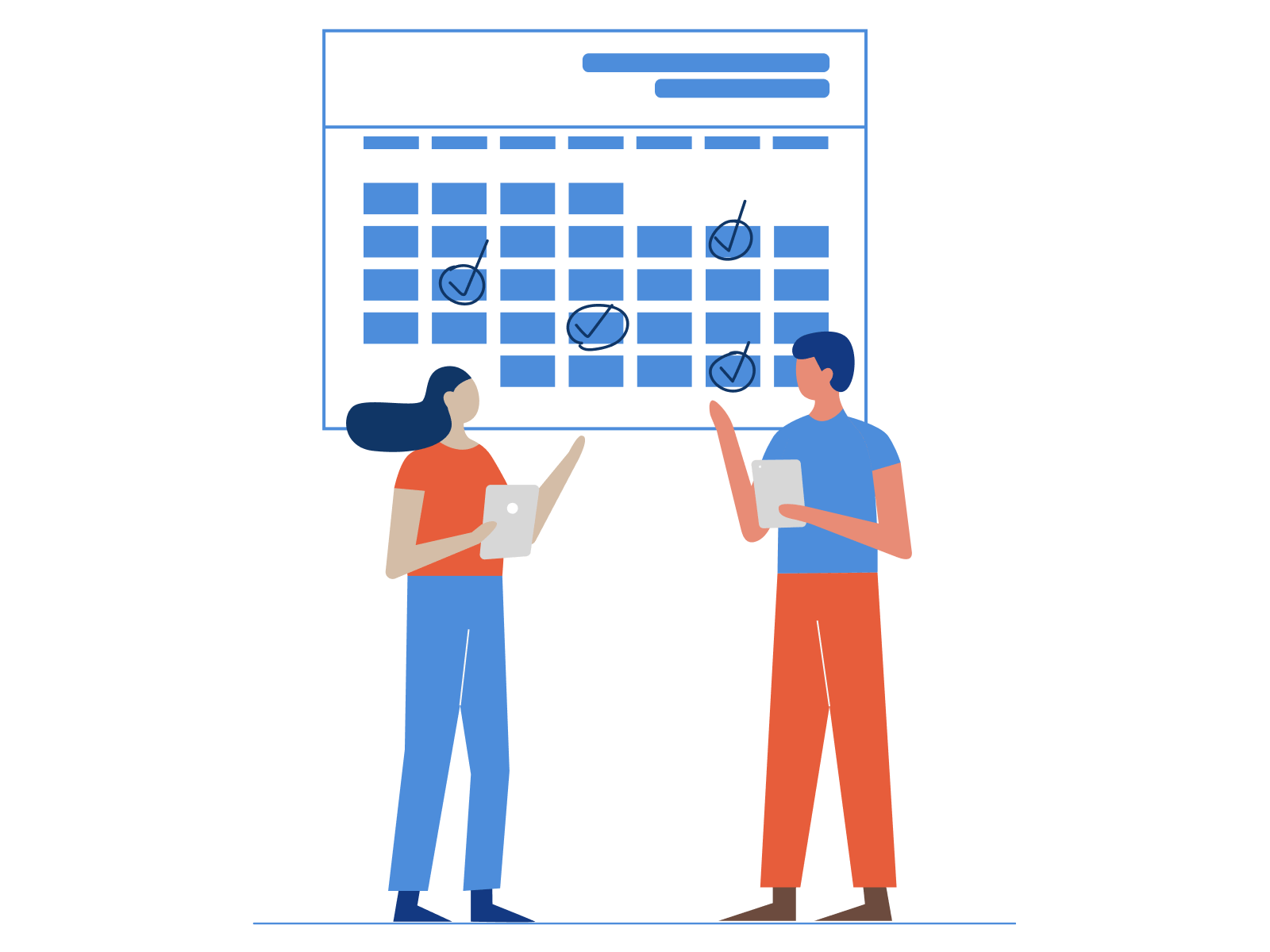
How to Launch New Software Features: A Comprehensive Guide

Intro
Any software product is only as good as the features and functionalities it offers its users. After all, it’s these capabilities that determine whether or not the product:
- Is user-friendly
- Addresses the user’s specific needs
- Makes them more efficient or effective
- Enables them to achieve a personal or business objective
- Empowers them to save time, money, or effort
The best software organizations are continually adding and updating new features to improve their products' quality, usability, and competitiveness. When these features are then released to users, this process is known as a feature rollout.
While the rollout of new features is quite different from the rollout of a new product, it’s essential both are managed with the same level of diligence and care. Failure to properly manage new feature rollouts could, at best, result in a subpar user experience and/or lack of visibility into what your team has shipped. However, at worst a poorly planned feature rollout could anger and confuse users, leading to a significant hit to NPS, as well as your organization's overall reputation.
In this guide, we walk through the process of launching a new software feature. We'll cover everything, from designing a communication strategy for announcing product changes, to planning a successful rollout for users, to seamlessly executing in a manner that keeps customers happy and engaged. We’ll also provide valuable tips to help you ensure a smooth and successful product launch each and every time.
{{resources-component-1}}
The Importance of Planning a Feature Rollout
We recommend a robust product launch plan when rolling out new features. A plan that seamlessly introduces new features into your product while:
- Ensuring ample preparation for customers
- Minimizing end user friction
- Accelerating your go-to-market motion
- Improving the product’s time-to-value for new users
- Maintaining the product’s quality and usability

There’s no doubt new features have a significant impact on overall product quality, and how these new features are received is dependent on the feature’s rollout. You only get one chance to make a first impression. A botched rollout can impact everything from your product’s NPS to your organization’s sales, profits, and reputation.
Even if your product team manages to roll back ill-received changes, they will then need to investigate what went wrong, find and fix the root cause of the issue, and likely re-implement the rollout. Beyond the negative user experience, this is a waste of time, effort, and money for your team.
To avoid these issues, it’s vital to plan the launch of every new feature from start to finish. A well-planned feature rollout will enable you to effectively introduce new features into your product, week in and week out. Think of a feature rollout plan as a step-by-step guide to introducing new features in a way that will deliver maximum benefit to specific cohorts of users.
For teams that prefer to beta test or A/B test new features prior to final deployment, a feature rollout plan is of specific value and importance. Especially when you’re dealing with multiple cohorts, developing a plan every time minimizes the risk of needing a potential rollback or hot-fix.
Best Practices for a Successful Feature Rollout
Developing a new feature starts with planning, continues with development and testing, and ends with the deployment and release. And, in fact, for a growing number of SaaS companies this process now continues after deployment and release. These days, more and more software teams continue testing, collecting user feedback, and further refining new features, even weeks or months after deployment.
But regardless of your team’s definition of done, a new feature rollout requires meticulous planning. To maximize your planning efforts, follow these best practices:

Start Early
The planning for a feature rollout should actually begin far before the deployment and release phase. Ideally, prep for a successful feature launch should be kicked off at the same time as the development work.
Starting early not only ensures that this important final step isn’t forgotten or overlooked by any member of the feature development team, but more importantly allows for the rollout plan and timeline to be adapted as necessary throughout the dev cycle. It’s inevitable that timelines will move and shift as the development process takes place, and the plan for rolling out the feature should be in lockstep as plans change in real-time.
Get Stakeholder Input
Depending on the size of the rollout, it’s likely a variety of departments will need to take part in rollout planning and preparation. Establish a core team that includes participants from each of these respective parts of the org. This includes, but isn’t limited to, a:
- Product manager
- Product designer
- Product marketer
- Project manager
- QA engineer
- Technical writer
When necessary, don’t forget to involve relevant stakeholders from other areas of the organization. This includes engineering, operations, legal, public relations, and sales. Elicit and collect early input from these teams to ensure the feature rollout ultimately meets everyone’s requirements across the business.
Set a Tentative Launch Window
As the saying goes, “a goal without a plan is just a wish”. A plan without some rollout date in mind also risks turning into a wish. Setting a launch date, even if it’s a rough window at first, will not only allow you to drive urgency across the team when necessary, but also determine when and where to focus your team’s efforts to achieve your desired objectives.

Working backwards from a date will help you:
- Compile a list of impactful activities and realistic deliverables
- Create and set pre-launch milestones
- Identify and assign owners
- Identify and track dependencies between tasks and activities
- Create and manage a runbook for executing on launch objectives
Set Development Milestones
When planning the rollout strategy for a new feature, it’s beneficial to create a detailed roadmap with milestones. Milestones are like goalposts to keep all of your stakeholders–and specifically your project management, dev, and product marketing teams–in sync and aligned. They also ensure you set and are communicating the right expectations across the business.
Milestones are often overlooked, but are essential for your core team to be able to track the pace of progress and know when to kick off different streams of work. The most seamless feature rollouts have clear milestones that all stakeholders agree to and then carefully track throughout the entire lifecycle of the feature’s development and release.
Determine Key Performance Indicators (KPIs)
To measure the success of your feature rollout, you need to define the critical success metrics, also known as KPIs. These qualitative or quantitative parameters provide a measurable way to answer questions like, “Did users like our new feature?”
There are countless KPI metrics you can define and track, depending on the type of feature you’re rolling out and the tactics you’re using to do so. A few such KPIs include:
- Net promoter score (NPS)
- Feature-level engagement
- Upsell / expansion revenue
- Traffic or page views
- New leads
- Positive reviews
- Competitive win rate (performance against a competitor’s product)
When launching new software features, it’s common for product and product marketing teams to share a KPI (or set of KPIs). This helps drive alignment between those two teams and ensures a smooth rollout for end users.
Address Regulatory, Legal, and Other Requirements
When rolling out a new feature, don’t forget to ensure that your product remains compliant with all relevant regulations. This includes, but isn’t limited to:
- Data security
- Customer privacy
- Legal responsibilities (e.g., Terms of Service)

Relatedly, it’s wise to ensure that your product documentation, vendor management agreements, etc. reflect your compliance posture. Especially when new features and functionality are being introduced, it’s a good time to assure users that nothing being changed will negatively impact their privacy or security with your service.
Define the Communication Strategy
You’ve planned, developed, and released a new feature on time and within budget. But the final step is arguably the most important: ensuring your customers know about these changes!
Your comms should include details about what’s changed for whom, everything users need to know to get the greatest value out of the new feature, and any required actions that may need to be taken. The first step in your communication strategy is then defining the channels where all of this information will be shared. These channels most often include:
- Social media
- Changelog
- Company blog (most applicable for tier 1 releases)
- In-app notifications
- Community
- Public roadmap
- Live chat
Whichever channels you choose, ensure your release comms are targeted, easy to find, and easy to understand. The last thing you want to do after all of this work is confuse or overwhelm users.
A second key component of your communication strategy is planning how you will gather, sort, and quantify user feedback throughout the feature launch. Customers providing feedback is inevitable and should be encouraged, and you must be equipped to receive it.
Ask yourself these three questions to ensure you’re prepared:
- What channel(s) should we use, and where should we guide users, to collect feedback?
- How will feedback be weighted among those who submit/provide it?
- What is our strategy for responding to this feedback?
Finally, make sure your communication strategy includes a plan to follow up with relevant stakeholders, both internally and externally.
Closing the loop with internal stakeholders, and particularly customer-facing teams, is crucial to ensuring that the feature rollout went smoothly. Moreover, if there is feedback gathered from either side that would be advantageous to collect or share, this provides the perfect opportunity.
And following up with external stakeholders–be they VIP clients, partners, power users, alpha and beta tests, or anyone else–goes a long way towards increasing user engagement and retention. Not to mention there is rarely an easier or more opportune touch point with external stakeholders than when you’ve provided them with new value. So don’t miss it!
For additional thoughts and ideas on things to do post-launch, check out 5 Steps to Executing the Perfect Post-Launch Strategy.
Prepare Marketing Assets and User Documentation
In parallel to the creation of a stellar communication strategy, your product marketing and technical writing teams should be leading the charge on a myriad of marketing and technical assets to support the feature rollout.
Driven by clear, detailed, and well-structured messaging, each of these assets should not only help users understand what’s being rolled out and how it will impact them, but of equal importance, the feature’s value proposition and how they can get the most out of it.
Here are some ideas for assets your team can create:
- User manuals
- How-to videos
- Troubleshooting guides
- Reference manuals
- Installation guides
- Datasheets
- FAQ web pages or landing pages
How LaunchNotes Can Help You Improve Software Feature Launches
Communicating about feature rollouts, software releases, and product changes is just as important, if not even more important, than the planning and development of whatever’s being shipped. However, even for the most experienced product teams this communication process can at best be overlooked and at worst become overwhelming and just ignored.
To ensure the caliber of your release comms match the quality of the software you’re building and releasing, a solution like LaunchNotes is critical. The LaunchNotes platform simplifies, streamlines, and standardizes the product change and release notification process. Custom categories ensure the right message always reaches the right audience, and launch templates ensure your comms are streamlined and communicated in a repeatable fashion that your users can easily consume.
Furthermore, with LaunchNotes you can easily collect, synthesize, organize, and sort customer feedback. And when updates are made that address the feedback your customers have provided, LaunchNotes automatically closes the loop with them. Keeping your customers happy and driving greater customer engagement.
Want to see for yourself? Try LaunchNotes free, or sign up for a demo, today!















